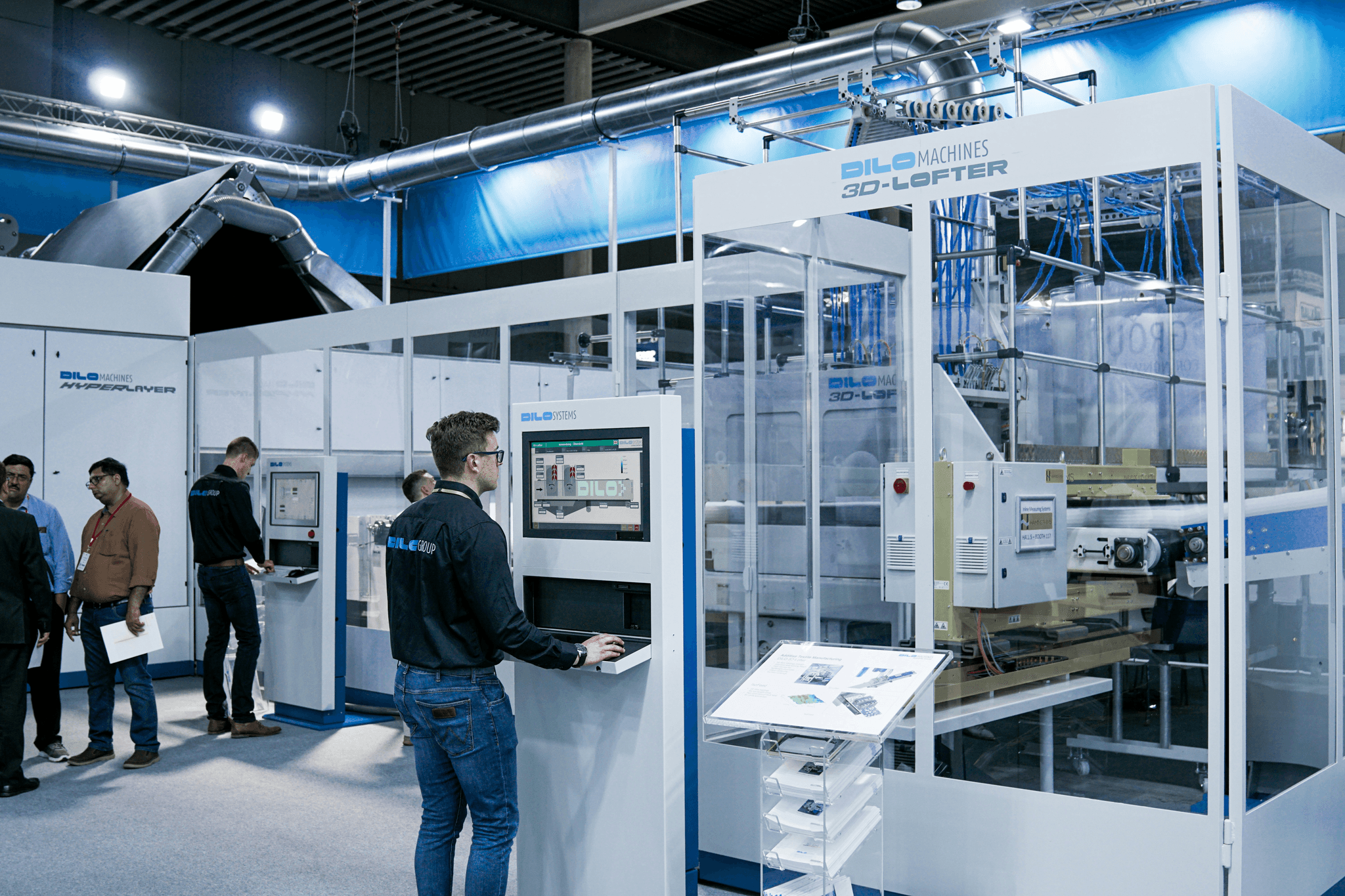Introduction
In the intricate world of business operations, audits, inspections, and checks serve as the backbone of quality control. These processes are not just bureaucratic hurdles; they are essential mechanisms that ensure products and services meet predefined standards. Understanding how these elements work together can significantly enhance a company's efficiency and effectiveness.
Understanding Audits, Inspections, and Checks
Audits are systematic evaluations designed to assess compliance with established guidelines or standards. Inspections focus on examining products or processes to ensure they meet quality benchmarks, while checks involve routine assessments to verify ongoing adherence to these standards. Checking or inspection is an example of a proactive approach that helps businesses identify issues before they escalate into costly problems.
Importance of Quality Control in Industries
Quality control is vital across industries because it directly influences customer satisfaction and brand reputation. By implementing rigorous audits and inspections, organizations can maintain high-quality outputs that meet market demands. In fact, checking or inspection is an example of a critical strategy in Six Sigma methodologies aimed at reducing defects and enhancing process efficiency.
How These Processes Impact Business Efficiency
The interplay between audits, inspections, and checks creates a robust framework for operational excellence. When businesses prioritize these processes, they minimize risks associated with poor quality—such as re-do or rework which is an example of unnecessary expenditure that can drain resources. Ultimately, integrating effective quality control measures leads to improved productivity and profitability in any organization.
What is an Audit?

Audits are comprehensive evaluations of an organization's processes, systems, and controls to ensure compliance and effectiveness. Their primary purpose is to assess the accuracy of financial statements, operational efficiencies, and adherence to regulations. By identifying areas for improvement, audits help organizations mitigate risks and enhance overall performance.
Definition and Purpose of Audits
An audit can be defined as a systematic examination of records, processes, or systems to verify their accuracy and compliance with established standards. The purpose of audits extends beyond mere verification; they aim to provide insights that drive continuous improvement within an organization. In many industries, checking or inspection is an example of how audits can lead to enhanced quality control by highlighting discrepancies that might otherwise go unnoticed.
Key Characteristics of Auditing
Auditing is characterized by its objectivity, systematic approach, and thoroughness. Auditors utilize established criteria to evaluate processes objectively, ensuring that findings are unbiased and reliable. This level of scrutiny is crucial because checking or inspection is an example of a practice that not only identifies issues but also fosters accountability within teams.
Moreover, audits often involve a detailed analysis of documentation and interviews with staff members to gain a comprehensive understanding of operations. This multifaceted approach helps organizations recognize potential areas for re-do or rework is an example of inefficiencies that could lead to increased costs down the line.
Real-World Examples of Successful Audits
One noteworthy example comes from the manufacturing sector where a major automotive company underwent a rigorous audit process that revealed significant inefficiencies in its supply chain management. By implementing the recommendations from the audit report, this company was able to streamline operations and reduce costs significantly—demonstrating how effective auditing can lead to tangible improvements in business performance.
Another instance involves a healthcare provider that faced challenges in compliance with regulatory standards. Following a thorough audit process which highlighted several critical gaps in their procedures—checking or inspection is an example of how these findings were addressed—the organization successfully revamped its protocols leading not only to improved patient care but also enhanced operational efficiency.
The Role of Inspections

Inspections play a crucial role in maintaining quality standards across various industries. They serve as a systematic process to evaluate products, services, or processes against defined criteria. By identifying defects or non-conformities early on, inspections help companies avoid costly errors and enhance overall efficiency.
Definition and Importance of Inspections
Inspections can be defined as the careful examination of products or processes to ensure they meet specified requirements. This practice is vital because it not only helps in maintaining quality but also fosters trust among consumers and stakeholders. When done effectively, checking or inspection is an example of proactive quality management that minimizes risks and enhances brand reputation.
Checking or Inspection is an Example of Quality Assurance
In the realm of quality assurance, checking or inspection is an example of a fundamental activity that ensures compliance with standards. It provides a structured approach to detect issues before they escalate into larger problems that could affect production timelines or customer satisfaction. By integrating inspections into their operations, businesses can establish a culture focused on continuous improvement and reliability.
Case Study: China Inspection Pro’s Impact on Manufacturing
China Inspection Pro has made significant strides in the manufacturing sector by offering comprehensive inspection services tailored to meet diverse industry needs. Their approach illustrates how checking or inspection is an example of effective quality control mechanisms that prevent defects from reaching the marketplace. Through their expertise, they have demonstrated that thorough inspections can drastically reduce re-do or rework costs associated with poor quality control practices.
Understanding Checks
In the realm of quality control, checks play a pivotal role in ensuring that processes and products meet established standards. Essentially, checks refer to systematic evaluations or assessments performed to verify compliance with specific criteria. They are essential for identifying defects early in production, thereby preventing costly errors down the line.
Definition of Checks and Their Usage
Checks can be defined as systematic procedures used to assess whether a product or process meets predetermined specifications. These evaluations can be applied at various stages of production, from raw materials to final outputs, ensuring that quality is maintained throughout the lifecycle. In many industries, checking or inspection is an example of proactive quality management that helps mitigate risks associated with substandard products.
The usage of checks extends beyond mere detection; it encompasses a culture of continuous improvement and accountability within organizations. By integrating checks into daily operations, businesses create an environment where quality is prioritized and maintained consistently. This not only enhances product reliability but also fosters customer trust—an invaluable asset in today’s competitive market.
Checking or Inspection is an Example of a Routine Process
Checking or inspection is an example of a routine process that organizations implement regularly to uphold their quality standards. These routine activities are often scheduled at specific intervals or milestones within the production cycle, making them integral to operational efficiency. When done correctly, these checks become second nature for employees and help maintain focus on delivering high-quality outcomes.
Incorporating checking as part of everyday operations streamlines workflows and reduces the likelihood of overlooking critical steps in the production process. Furthermore, routine inspections allow teams to identify trends over time; this data can then inform adjustments needed for continuous improvement initiatives. Ultimately, by treating checking or inspection as an example of standard procedure rather than an afterthought, companies can significantly enhance their overall performance.
Industry Insights on Effective Checking Mechanisms
Effective checking mechanisms are vital for any organization aiming for excellence in quality control practices. Industries such as manufacturing have adopted sophisticated technologies like automated systems and real-time monitoring tools to enhance their checking processes significantly. For instance, implementing Six Sigma methodologies shows how checking or inspection is an example of rigorous data analysis aimed at minimizing defects and improving overall efficiency.
Moreover, organizations must consider that checking or inspection is an example of which cost concerns when allocating resources for quality assurance programs. Investing in effective checks often leads to substantial savings by reducing re-do or rework costs associated with defective products—an expense no business wants to incur repeatedly! As companies continue evolving their approaches towards quality management, understanding these insights will pave the way for more efficient operations across various sectors.
Comparing Audits, Inspections, and Checks

In the realm of quality control, audits, inspections, and checks serve distinct yet complementary roles. Each process has its unique approach and purpose that ultimately contribute to a business's operational integrity. Understanding these differences not only clarifies their individual importance but also highlights how they work together to enhance overall efficiency.
Key Differences in Approach and Purpose
Audits are comprehensive evaluations aimed at assessing compliance with established standards or regulations. Their primary focus is on systematic examination and verification of financial records or operational processes to ensure accuracy and adherence to policies. On the other hand, inspections are more hands-on assessments that typically involve checking products or services against specific criteria; they are often performed in real-time during production or service delivery.
Checks can be viewed as routine processes designed to verify that operations continue to meet quality benchmarks over time. While audits may occur periodically and require extensive documentation, inspections happen more frequently, often on the shop floor or directly at service points. In contrast, checking serves as a continuous feedback mechanism that helps maintain quality throughout various stages of production.
This distinction in approach is crucial because it informs how businesses allocate resources for each process. By understanding that checking or inspection is an example of a proactive measure for maintaining quality standards, companies can better prioritize their efforts in managing these functions effectively. Thus, recognizing these differences allows organizations to tailor their strategies for audits, inspections, and checks according to their specific needs.
Checking or Inspection is an Example of Prioritizing Quality
When we say that checking or inspection is an example of prioritizing quality, we mean it embodies a commitment to excellence at every level of operation. Regular inspections ensure that any deviations from established standards are caught early before they escalate into larger issues affecting product integrity or customer satisfaction. This proactive approach not only minimizes defects but also fosters a culture where quality becomes everyone's responsibility.
In the context of Six Sigma methodologies—where reducing variation and enhancing process capability reign supreme—checking or inspection plays a pivotal role in sustaining improvements achieved through rigorous data analysis and strategic planning. By integrating regular checks into daily operations, teams can swiftly identify anomalies while reinforcing the notion that quality assurance is integral rather than ancillary to success.
Ultimately, when businesses adopt this mindset around checking or inspection being an example of prioritizing quality, they create systems where employees feel empowered to uphold high standards consistently. This leads not just to better products but also cultivates trust with customers who value reliability—a cornerstone for long-term success in any market.
How Each Process Affects Overall Business Outcomes
The impact of audits, inspections, and checks on business outcomes cannot be overstated; each plays a crucial role in shaping operational effectiveness and financial performance. For instance, effective auditing practices help identify inefficiencies within financial systems which can lead directly to cost savings—underscoring how re-do or rework is an example of what happens when processes go unchecked over time.
Inspections contribute significantly by ensuring that products meet regulatory requirements before reaching consumers; failing this can result in costly recalls—not just financially but also reputationally damaging for companies involved. Meanwhile, regular checks reinforce consistency across production lines which translates into fewer errors down the line; thus mitigating risks associated with poor-quality outputs.
By understanding how each process interlinks within the broader framework of business operations—where checking or inspection is an example of ongoing vigilance against potential pitfalls—organizations can harness these tools strategically for improved outcomes across all fronts: efficiency gains lead directly back into profitability margins while establishing robust customer loyalty through consistent product excellence.
The Financial Impact

In the world of business, financial implications can make or break an organization. Understanding how checking or inspection is an example of cost concerns is crucial in maintaining a healthy bottom line. By identifying inefficiencies and potential pitfalls through these processes, companies can significantly reduce unnecessary expenditures and enhance profitability.
Checking or Inspection is an example of which cost concerns
Checking or inspection is an example of various cost concerns that businesses face daily, including labor costs, material waste, and production delays. When inspections are not conducted effectively, it can lead to costly errors that require additional resources to rectify. This not only affects the immediate budget but also has long-term implications for overall operational efficiency.
Moreover, when businesses neglect proper checking or inspection processes, they often find themselves grappling with hidden costs that aren't immediately apparent. These may include customer dissatisfaction leading to lost sales and reputational damage that could take years to recover from. Thus, recognizing checking or inspection as a fundamental aspect of cost management is vital for any organization aiming for sustainable growth.
The Cost of Re-do or Rework is an example of Poor Quality Control
The cost of re-do or rework is an example of poor quality control that can severely impact a company's financial health. When products fail to meet standards due to inadequate checks and inspections, businesses are forced into a cycle of corrections that drain resources and time. This not only inflates production costs but also diverts attention away from innovation and growth strategies.
In many cases, re-doing work becomes more than just a financial burden; it creates frustration among employees who may feel their efforts are undermined by oversight failures. Additionally, repeated rework can lead to employee burnout and turnover, further exacerbating the financial strain on the organization. Recognizing the link between quality control and financial performance allows companies to prioritize effective auditing practices that minimize these costly repercussions.
Strategies to Minimize Financial Loss through Effective Auditing
To mitigate financial loss effectively through auditing processes requires strategic planning and execution tailored to each organization's unique needs. Implementing regular audits ensures that checking or inspection is an example of proactive measures rather than reactive fixes after issues arise. By developing comprehensive audit frameworks that encompass all aspects of operations—from procurement to production—businesses can identify weaknesses before they escalate into significant problems.
Furthermore, fostering a culture where employees understand the importance of quality control enhances accountability across all levels within the organization. Training staff on best practices in quality assurance ensures they recognize how their roles contribute directly to minimizing costs associated with rework and inefficiencies—making them integral players in maintaining standards rather than just following orders blindly.
Finally, leveraging technology such as automated systems for tracking compliance during audits provides real-time insights into operational performance while reducing human error risks inherent in manual checks—ultimately leading to better decision-making grounded in data analysis rather than guesswork alone.
Conclusion
In the fast-paced world of business, audits, inspections, and checks are not just optional extras; they are essential processes that ensure quality and efficiency. Each plays a critical role in maintaining standards and fostering continuous improvement within organizations. By integrating these three mechanisms, businesses can enhance their operational effectiveness and ultimately drive better outcomes.
Why Businesses Need All Three Processes
Businesses need audits to provide an objective evaluation of their operations, ensuring compliance with regulations and internal policies. Inspections serve as a frontline defense against defects, catching issues before they escalate into larger problems—checking or inspection is an example of proactive quality assurance. Lastly, regular checks help maintain consistency in processes, reducing variability and ensuring that products meet established standards—after all, re-do or rework is an example of the costs associated with poor quality control.
Aligning Audits, Inspections, and Checks for Success
Aligning audits, inspections, and checks creates a cohesive quality management system that maximizes efficiency across departments. When these processes work together seamlessly, businesses can identify potential risks early on—checking or inspection is an example of how preventive measures can save time and resources in the long run. This alignment also fosters a culture of accountability where employees understand their roles in maintaining quality standards.
Future Trends in Quality Control and Assurance
Looking ahead, we anticipate several trends shaping the future of quality control and assurance practices across industries. The integration of advanced technologies such as AI-driven analytics will enhance auditing capabilities while providing real-time insights into performance metrics—checking or inspection is an example of how technology can streamline these processes significantly. Furthermore, organizations will increasingly focus on reducing costs associated with non-conformance; after all, re-do or rework is an example of what happens when quality takes a backseat.
